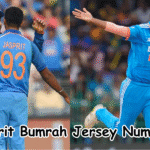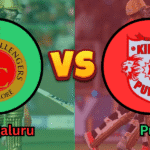It’s easy to assume that the biggest rewards create the strongest reactions. But in practice, it’s the small wins — frequent, fast, and familiar — that shape how we feel and how long we stay engaged. They build a rhythm, not just excitement.
The Psychology Behind “Just Enough” Wins
Big wins are rare for a reason. They’re built to be rare. But the emotional architecture of most short-form games is designed around something else entirely: micro-rewards. These are small moments of success — a matched line, a bonus trigger, a near-win — that give just enough payoff to keep motivation alive.
These wins don’t need to be massive. What matters is that they’re felt. A sound effect, a flash of color, a coin animation — all these signals tell the brain: “You did something right.” That moment sticks.
That’s why platforms with high-quality feedback cycles, like those found here, keep players returning not out of habit but out of emotional rhythm. It’s not an addiction. It’s reinforcement. The brain remembers what felt good — and returns to repeat the pattern.
Why Rare Wins Don’t Keep You Playing — But Small Wins Do
Big payouts feel great, but they aren’t what sustain long-term engagement. In fact, large, infrequent rewards often create a drop-off after the win. The high fades quickly, and the player feels finished.
Small wins, on the other hand, create a feeling of flow. They come often enough to validate effort but not so often that they lose meaning. It’s this balance that keeps a session going. A slight uptick in the score. A bonus round that almost triggered. These aren’t failures — they’re emotional nudges.
This is known in psychology as intermittent reinforcement, and it’s one of the most powerful motivators in behavioral design. People don’t just chase results — they chase rhythm. If the experience feels like it’s building toward something, even slowly, they stay in.
That’s why session design often prioritizes the emotional pacing of wins over their actual size. It’s not about what you win. It’s about how often you feel like you’re close.
Sound, Motion, and the Win Illusion
A key part of the small-win effect is how it’s presented. A one-credit payout and a ten-credit payout can feel surprisingly similar when the design wraps both in sound, color, and light. Designers know this. They intentionally shape perception.
Winning isn’t just math. It’s sensory. That’s why so much effort goes into how rewards are revealed. A rising tone. A coin sparkle. A slow zoom-in. These elements heighten emotion, even if the prize is minor. And the result? The small win feels more important than it is — which keeps motivation high.
This doesn’t trick players. It supports their attention. When each action delivers meaningful feedback, even a modest result feels satisfying. This is what keeps play loops tight, responsive, and enjoyable over time.
Small wins don’t scream. They pulse — keeping the player gently engaged and emotionally aligned with the experience.
From Motivation to Mood: How Micro-Rewards Affect Behavior
It’s not just attention that small wins influence — it’s mood. Brief moments of reward elevate dopamine, which can lift the emotional state even slightly. Over time, repeated exposure to these mini-highs creates an association between play and emotional reset.
This is why players often open a game not to chase a jackpot but to shift their mindset. A short session can bring energy back into a tired workday or serve as a buffer between tasks. The win isn’t financial — it’s mental.
Conclusion: Small Wins, Big Impact
We often celebrate the major outcomes — the one big win, the rare jackpot. But in most digital plays, those moments are the exception, not the rule. What really shapes behavior are the little victories: the almosts, the maybes, the close calls that feel like progress.
Those small emotional hits build patterns — not just of engagement but of perception and mood. When the experience is crafted to deliver frequent, satisfying micro-rewards, the player stays not because they’re chasing luck but because the rhythm feels good.
And in digital life, where attention is fractured, and fatigue is common, that rhythm isn’t just engaging — it’s restorative.











